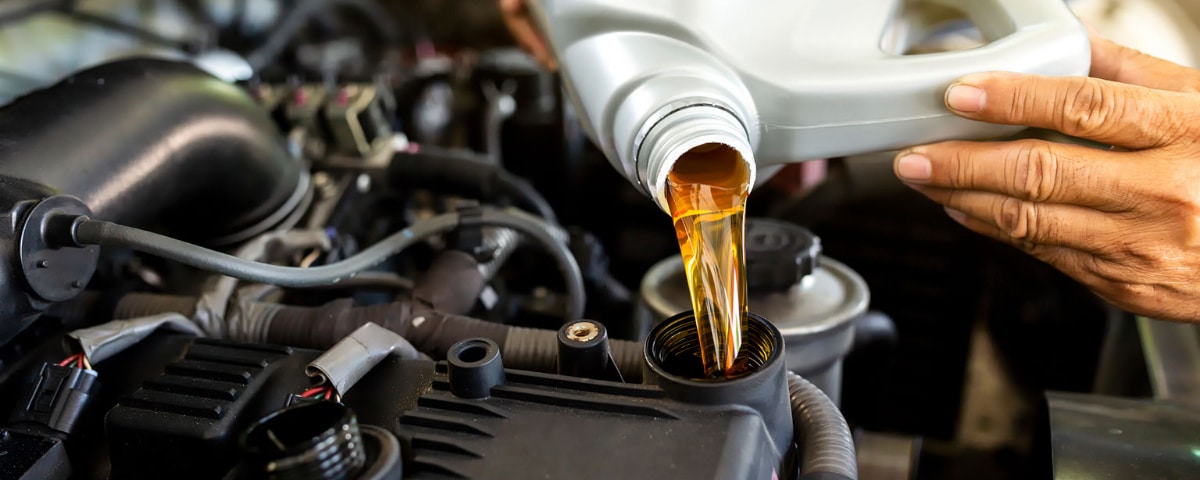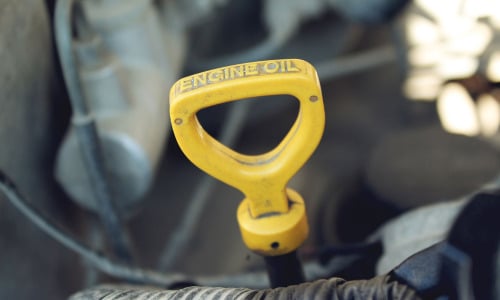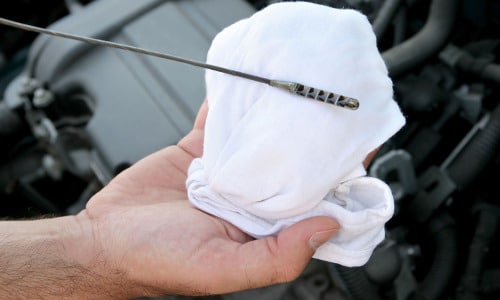What’s a Dipstick?
March 1, 2023
Maintenance

A dipstick may sound like something found in a Lewis Carroll story or a Dr. Seuss book, but it is a real thing. Your vehicle’s dipstick actually plays an important role in your regular vehicle maintenance, so if you don’t know what it is, now’s a good time to learn.
The Dipstick – The Untold Story
It is very likely that you don’t know what a dipstick is because there’s no emoji for it, and if there’s no emoji for something, does it actually exist?
In this case, it does.
You can find your dipstick under your vehicle’s hood. It is a stick with a little (often yellow) loop on the end of it that will be sticking out of your oil reservoir. It looks like this:

dipstick
The dipstick is like a ruler that measures your oil level. It contains a minimum and maximum marker so that you can easily see if your oil levels are full or need to be refilled.
Now that you understand the dipstick and hopefully believe us that it is a real item, let’s learn how to use it!
The Dipstick – An Untapped Resource
So, you’ve found your dipstick under the hood but staring at it wondering what to do with it, isn’t going to help you much.
So, here’s what you should do. First, make sure that your vehicle is parked on a flat surface. If the vehicle is angled at all, it won’t give you an accurate oil level reading.
Next, pull out the dipstick and wipe it with a clean rag. Get all of the oil off it.
Then put the dipstick back in the reservoir. “That’s a weird thing to do after you’ve just cleaned it,” you may think, but there is a reason for it!
Now take the dipstick back out of the reservoir and look at the markers. Wherever you see the oil line, this indicates how much oil is in your reservoir. When you drive around and go over bumps, the oil can splash up on the dipstick so that’s why you need to clean it before you stick it back in. It all makes sense now! Right?
So, when you look at the oil markers, here’s how to read them:
The top marker indicates the maximum level that your oil reservoir can hold; you never want to overfill your oil reservoir because this can cause oil to burn off under your engine and smoke, leaving your car looking like it just grew a chimney.
The bottom marker indicates the minimum level that you must have in your oil reservoir. If the oil reaches below that indicator, this could cause serious problems to your engine; this is why it’s important to know how to check your oil so that you can be sure the reservoir stays substantially full.
As shown below, this oil reservoir is full because you can see the oil line is at the highest-level indicator:

oil level indicator
And that’s it, you’ve checked your oil level!
If your oil is below the minimum level, make sure to bring your vehicle to your local Tirecraft to have it filled up with the correct oil, and we will check to make sure that there are no leaks in your reservoir causing it to run low.
Oh, there’s one last thing! When you’re checking your oil level, you should also examine the clarity of the oil. If it looks clean and clear, that’s perfect! If it looks thick, gluggy, and dirty, then you need to bring your vehicle in for an oil change! You want to get your oil changed after you’ve driven 5,000km – 10,000km to make sure it stays clean and clear to keep all of your engine’s parts lubricated.
Now you know that your dipstick is a real item and a useful one nonetheless!
Back

